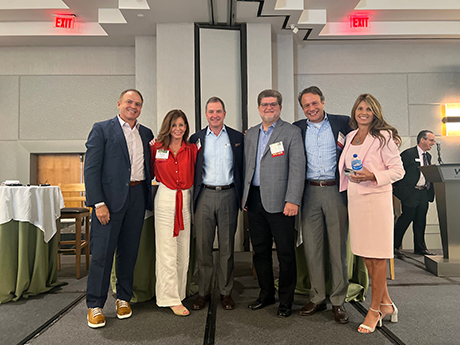ATLANTA — The demand metrics of seniors housing are extremely compelling, given the demographics of Americans aging into the product type. But that demand is not necessarily translating directly to occupancy at senior living properties.
This disparity between leads and move-ins is just one of the gaps that the panelists highlighted throughout the “Power Panel” at France Media’s InterFace Seniors Housing Southeast conference that touched on marketing, generational differences and family expectations.
Hosted Aug. 16 at the Westin Buckhead in Atlanta, the panel offered insight into the state of the industry, as seen through the eyes of C-Suite executives. Participants included Iyvonne Byers, CFO of Priority Life Care; Judd Harper, president of The Arbor Co.; Doug Schiffer, president and chief operating officer of Allegro Senior Living; Shelley Esden, president and CEO of Sonata Senior Living; and Terry Rogers, president and CEO of Westminster Communities of Florida. John Lariccia, CEO of WelcomeHome Software, served as the moderator.
Follow the lead
Esden said that the “big discrepancy between the rise in the number of leads and the rise in move-ins” can be partly accounted for by the prevalence of digital marketing and automation, particularly in the post-COVID landscape. For this reason, she notes that it’s important to intelligently engage in data analytics and interrogate the quality of the leads generated.
Schiffer concurred. “A lot of decisions are being made behind some screen.” He added that, in addition to Esden’s prescription of identifying and cultivating higher quality virtual leads, an effective marketing strategy should also prioritize engaging with potential consumers in person, such as through property tours.
“We’re training our folks to recognize how important that aspect of the relationship is once you’re actually past the front door,” said Schiffer.
Home sweet home
Community tours can also offer the opportunity to address what moderator John Lariccia referred to as the “perception gap” between what a prospect thinks senior living is like and reality.
“If older adults have their choice, they would like to stay at home,” said Byers.
An important challenge is shifting the perception of potential residents and cultivating the same enthusiasm Byers herself feels for the senior living product.
Referencing a recent visit to a community in Savannah, Byers noted that she looked forward to the experience of surrounding herself “with people that are in a similar situation” and doing “a lot of fun things.” She acknowledged that incoming generations feel differently and that she “would love to see a paradigm shift.”
Okay, boomer
Complicating the matter is that the definition of a desirable senior living model is not uniform across generations, engendering another divide within the field. As Rogers pointed out, “baby boomers created what we have today for their parents, and they don’t want what their parents had.” More specifically, Rogers said that offering the current incoming generation of residents an abundance of “control, options, autonomy and choice” is crucial.
On the other hand, Harper qualified that there are always certain consistencies in resident desires and expectations. Chief among these is the wish for “a great environment, engaging activities and great dining.”
Family ties
If resident expectations remain largely concentrated on day-to-day realities and quality of life, families of residents prioritize health and safety, creating one more gap for senior living professionals to navigate.
“One of the interesting parts of all of our jobs right now is to figure out how you sell those two things, while keeping each one quiet from the other,” said Schiffer
Familial involvement has also reached new levels of intensity, according to panelists, who said that loved ones go so far as wanting cameras in resident rooms, in the interest of staying connected with their family member and the care they receive.
Stay connected
Ultimately, connection is one of the greatest offerings of senior living itself. Whereas senior adults remaining at personal residences can experience loneliness — Byers conjured the image of older adults “waiting for their kids to come visit” — senior living communities offer inherent social interaction and a network of care.
Channeling this strength into all aspects of the business and fostering communication can provide a guiding principle in navigating the many nuanced divides complicating the industry today, as well as the more practical and logistical concerns facing the whole of the commercial real estate industry.
Panelists noted that although the sector is “very micro-market specific,” in the words of Harper, it is certainly affected by economic headwinds such as interest rates, inflation, rising costs and challenges to development, including scarcity of available land.
In spite of these industry stressors, the panel offered an optimistic outlook for the future of seniors housing, which, by focusing on connection, communication and the unwavering value of senior living communities, can ensure its own continued success.
— Hayden Spiess

